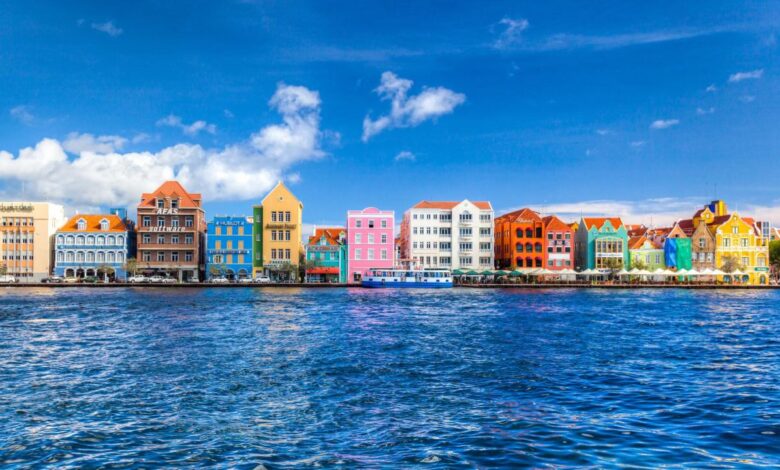Destination Dupes Revolutionize Travel Planning

The Rise of Smart Travel Alternatives
A transformative trend is reshaping how travelers discover and experience destinations worldwide. “Destination dupes”—lesser-known alternatives that offer similar appeal to famous hotspots—are emerging as the strategic response to overtourism, inflated prices, and generic travel experiences. This movement represents more than simple cost-saving; it’s a sophisticated approach to travel that values authenticity, sustainability, and discovery over prestige and convenience. From Asian cities that mirror Parisian charm to Caribbean islands offering Maldivian luxury at half the price, these clever alternatives are democratizing extraordinary travel experiences while distributing tourism benefits more broadly. This comprehensive analysis explores the cultural drivers behind the dupe phenomenon, showcases compelling alternatives across continents, examines the economic implications, and provides practical strategies for identifying and enjoying these emerging destinations before they become tomorrow’s overcrowded hotspots.
A. The Cultural and Economic Drivers Behind the Dupe Phenomenon
Multiple converging factors have propelled destination dupes from travel hack to mainstream strategy.
A.1. The Overtourism Backlash and Crowd Avoidance
As iconic destinations buckle under visitor pressure, travelers are seeking comparable experiences without the crowds.
-
Quality Experience Preservation: Visitors to destinations like Venice, Bali, and Barcelona increasingly find their experiences diminished by endless queues, crowded viewpoints, and overwhelmed infrastructure, making alternatives with similar appeal but fewer visitors increasingly attractive.
-
Authentic Encounter Prioritization: Dupes typically offer more genuine cultural interactions, as local economies haven’t yet fully adapted to mass tourism, preserving traditional lifestyles and unfiltered hospitality.
-
Photographic Opportunity Access: The Instagram era has created intense competition for identical shots at famous landmarks, driving savvy travelers to locations offering similar aesthetic appeal without the crowds.
A.2. Economic Pressures and Value Reassessment
Economic realities are forcing travelers to seek comparable experiences at better price points.
-
Inflation Impact Mitigation: With travel costs rising significantly post-pandemic, dupes offer substantial savings on accommodation, dining, and activities while delivering similar cultural or natural appeal.
-
Exchange Rate Advantages: Strategic travelers identify dupes in countries with favorable exchange rates, dramatically stretching travel budgets without sacrificing experience quality.
-
Value Consciousness Evolution: Modern travelers increasingly question why they should pay premium prices for overcrowded experiences when comparable alternatives exist at lower price points with better visitor-to-local ratios.
A.3. Digital Democratization of Travel Discovery
Technology has dismantled the information barriers that once kept alternative destinations obscure.
-
Algorithm-Driven Discovery: Social media platforms, particularly TikTok and Instagram, actively surface under-the-radar destinations to users interested in popular hotspots, accelerating dupe discovery.
-
Review Platform Saturation: As review platforms like TripAdvisor become saturated with identical advice for famous destinations, travelers venture to alternative platforms and blogs to find novel recommendations.
-
Mapping Technology Accessibility: Detailed satellite imagery and street view technology allow travelers to thoroughly “preview” potential dupe destinations, reducing uncertainty about lesser-known locations.
B. Compelling Destination Dupes Across Continents
From urban alternatives to tropical substitutes, destination dupes span every travel category and geography.
B.1. European Alternatives to Classic Destinations
Europe’s dense cultural landscape offers numerous sophisticated alternatives to overcrowded classics.
-
Instead of Paris, France → Ljubljana, Slovenia: This enchanting capital offers Parisian-style cafe culture, romantic riverfront architecture, and sophisticated dining at a fraction of Paris prices, with the added advantage of being walkable and significantly less crowded.
-
Instead of Santorini, Greece → Milos, Greece: Offering the same iconic white architecture against blue waters, Milos provides spectacular beaches, volcanic landscapes, and stunning sunsets without the intense crowds and premium prices of its famous counterpart.
-
Instead of Amsterdam, Netherlands → Ghent, Belgium: With picturesque canals, medieval architecture, and world-class museums, Ghent delivers the quintessential European city experience with fewer tourists and a more relaxed local atmosphere.
B.2. Asian and Pacific Region Substitutes
The Asia-Pacific region offers countless alternatives to its world-famous destinations.
-
Instead of Bali, Indonesia → Lombok, Indonesia: Just east of Bali, Lombok offers similar volcanic landscapes, Hindu temples, and spectacular beaches with greater authenticity, lower prices, and significantly fewer tourists, particularly in developing areas like the Secret Gilis.
-
Instead of The Maldives → The Philippines’ El Nido: While lacking overwater bungalows, El Nido’s breathtaking limestone formations, turquoise waters, and luxury island resorts offer a comparable tropical paradise experience at approximately one-third the cost.
-
Instead of Tokyo, Japan → Taipei, Taiwan: Delivering similar futuristic cityscapes, exceptional cuisine, and efficient public transportation alongside rich cultural traditions, Taipei offers the advanced Asian metropolis experience with lower costs and easier navigation.
B.3. Americas and Caribbean Alternatives
The Western Hemisphere presents compelling substitutes across price points and experience types.
-
Instead of Tulum, Mexico → Bacalar, Mexico: This “Lake of Seven Colors” destination offers the bohemian vibe and natural beauty that originally made Tulum famous, with pristine freshwater lagoons, eco-conscious accommodations, and a more relaxed atmosphere.
-
Instead of The Amalfi Coast, Italy → California’s Central Coast: The dramatic meeting of mountains and ocean along Highway 1 between Big Sur and San Simeon offers comparable scenic grandeur with easier access, more affordable dining, and diverse accommodation options.
-
Instead of Costa Rica → Panama: Offering similar biodiversity, eco-tourism infrastructure, and Pacific beaches, Panama provides comparable nature experiences with lower costs, fewer tourists, and the unique addition of Caribbean coast accessibility.
C. The Economic Implications of the Dupe Movement
The rise of destination dupes creates complex economic impacts across the tourism ecosystem.
C.1. Destination Development and Economic Redistribution
The dupe phenomenon is shifting economic benefits to previously overlooked regions.
-
Secondary City Development: As travelers seek alternatives to capital cities and major hubs, secondary cities experience accelerated tourism development, infrastructure investment, and job creation.
-
Rural Economic Stimulation: Many nature-focused dupes are located in rural areas, distributing tourism revenue beyond urban centers and supporting agricultural and craft traditions.
-
Seasonal Smoothing: Dupes often have less pronounced seasonality than their famous counterparts, creating more stable year-round tourism economies.
C.2. Industry Adaptation and Market Response
The travel industry is rapidly adapting to capitalize on the dupe trend.
-
Airline Route Development: Carriers are adding and expanding service to emerging dupe destinations, with low-cost airlines particularly active in connecting alternative destinations to major hubs.
-
Accommodation Innovation: Hotel chains and independent operators are developing properties in dupe destinations, often emphasizing authentic design and local partnerships rather than standardized international models.
-
Tour Operator Diversification: Travel companies are expanding offerings to include dupe destinations, with specialized itineraries that highlight comparative advantages over crowded alternatives.
C.3. Original Destination Response Strategies
Famous destinations are implementing various strategies in response to the competitive pressure from dupes.
-
Premium Experience Development: Some iconic destinations are focusing on higher-value, lower-volume tourism, offering exclusive experiences that cannot be easily duplicated elsewhere.
-
Infrastructure Improvement: Overcrowded destinations are investing in visitor management systems, advanced booking platforms, and crowd control measures to improve the experience for those who still choose to visit.
-
Regional Partnership Models: Forward-thinking tourism boards are promoting their famous destinations alongside regional alternatives, creating multi-destination itineraries that distribute visitor pressure.
D. Strategic Implementation: Finding and Leveraging Destination Dupes
Successfully incorporating destination dupes into travel planning requires specific strategies and considerations.
D.1. Systematic Dupe Identification Methodology
Finding compelling alternatives involves more than random searching.
-
Feature-Based Analysis: Break down what makes the original destination appealing (architecture, cuisine, natural features, activities) and systematically search for locations offering similar combinations.
-
Geographic Proximity Investigation: Often the most compelling dupes are located near famous destinations, sharing similar cultural, historical, and natural characteristics while remaining less discovered.
-
Local Knowledge Mining: Engage with residents of popular destinations, who often have firsthand knowledge of comparable but less-crowded alternatives in their region.
D.2. Experience Calibration and Expectation Management
While dupes offer similar appeal, they are not identical replacements.
-
Comparative Advantage Identification: Each dupe will have unique strengths and weaknesses compared to the original destination—successful travelers identify and prioritize these based on personal preferences.
-
Infrastructure Assessment: Dupes may have less developed tourism infrastructure, requiring adjustments to travel style and expectations regarding convenience, language barriers, and service standards.
-
Authenticity Evaluation: The very factors that make dupes appealing (less commercialism, more authentic experiences) may also mean fewer tourist-oriented services and conveniences.
D.3. Travel Planning Adaptation for Alternative Destinations
Visiting emerging destinations requires different preparation than traveling to established hotspots.
-
Information Source Diversification: With fewer standardized guidebooks and online resources, planning requires consulting a wider range of sources, including specialized blogs, academic papers, and local tourism offices.
-
Logistical Flexibility: Transportation, accommodation, and activity options may be less predictable, requiring more flexible itineraries and backup plans.
-
Cultural Preparation: With less tourism cultural adaptation, visitors to dupe destinations often benefit from more extensive pre-travel cultural research and language preparation.
E. Sustainability Considerations and Ethical Implications
The dupe movement presents both opportunities and challenges for sustainable tourism development.
E.1. Overtourism Mitigation Potential
Destination dupes offer a potential solution to the overtourism crisis.
-
Visitor Distribution Mechanism: By redirecting traveler interest to alternative destinations, dupes can reduce pressure on overwhelmed ecosystems, historic sites, and communities.
-
Carrying Capacity Management: The natural variation in destination popularity creates an organic system where visitor numbers align more closely with local capacity.
-
Preservation Through Diversion: Reducing visitor pressure on iconic sites can extend their lifespan and preserve them for future generations.
E.2. Responsible Engagement with Emerging Destinations
The same pattern that creates dupes can eventually lead to the problems they initially solve.
-
Sustainable Mindset Application: Travelers should bring the same responsible tourism practices to dupe destinations that they would to any location, minimizing environmental and cultural impact.
-
Community Benefit Prioritization: Choosing locally-owned accommodations, restaurants, and tour operators ensures tourism revenue benefits destination communities directly.
-
Digital Sharing Ethics: Consider the impact of geotagging and social media promotion on emerging destinations, balancing discovery with preservation.
E.3. The Destination Lifecycle and Future Planning
Understanding that today’s dupes may become tomorrow’s hotspots is essential for long-term sustainability.
-
Proactive Destination Management: Emerging destinations can learn from the mistakes of their famous counterparts, implementing sustainable tourism policies before problems emerge.
-
Visitor Education Integration: Successful dupe destinations often incorporate sustainability education into the visitor experience, fostering responsible behavior from the beginning.
-
Community-Led Tourism Development: Ensuring local communities maintain control over tourism development helps preserve the authentic character that made the destination appealing initially.
Conclusion: The Strategic Future of Travel Discovery
The destination dupe phenomenon represents far more than a temporary social media trend—it signals a fundamental maturation in how travelers evaluate and select their experiences. This movement demonstrates a growing sophistication among travelers who prioritize authentic engagement, sustainable practices, and personal discovery over prestige and convenience. As the travel industry continues to evolve, the distinction between primary destinations and their alternatives will likely blur, creating a more diverse, resilient, and distributed global tourism landscape. The most successful future travelers will be those who master the art of strategic destination selection—balancing iconic experiences with emerging alternatives, understanding the lifecycle of destinations, and recognizing that the value of travel lies not in checking famous locations off a list, but in finding personal connection and transformation wherever their journeys take them. In this new paradigm, every traveler becomes a discoverer, and the world reveals itself as infinitely rich with alternatives for those willing to look beyond the obvious.
Tags: destination dupes, travel alternatives, overtourism solutions, affordable travel, hidden gems, sustainable tourism, travel trends, smart travel, budget travel, alternative destinations, travel planning, crowd avoidance







